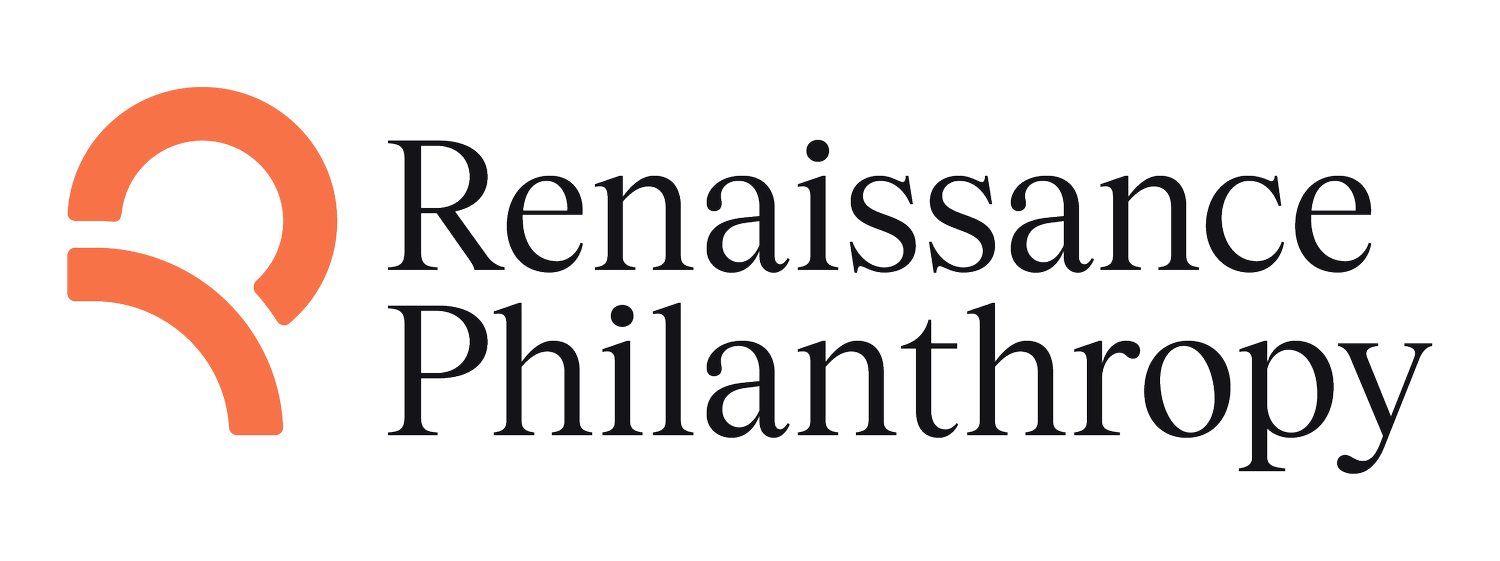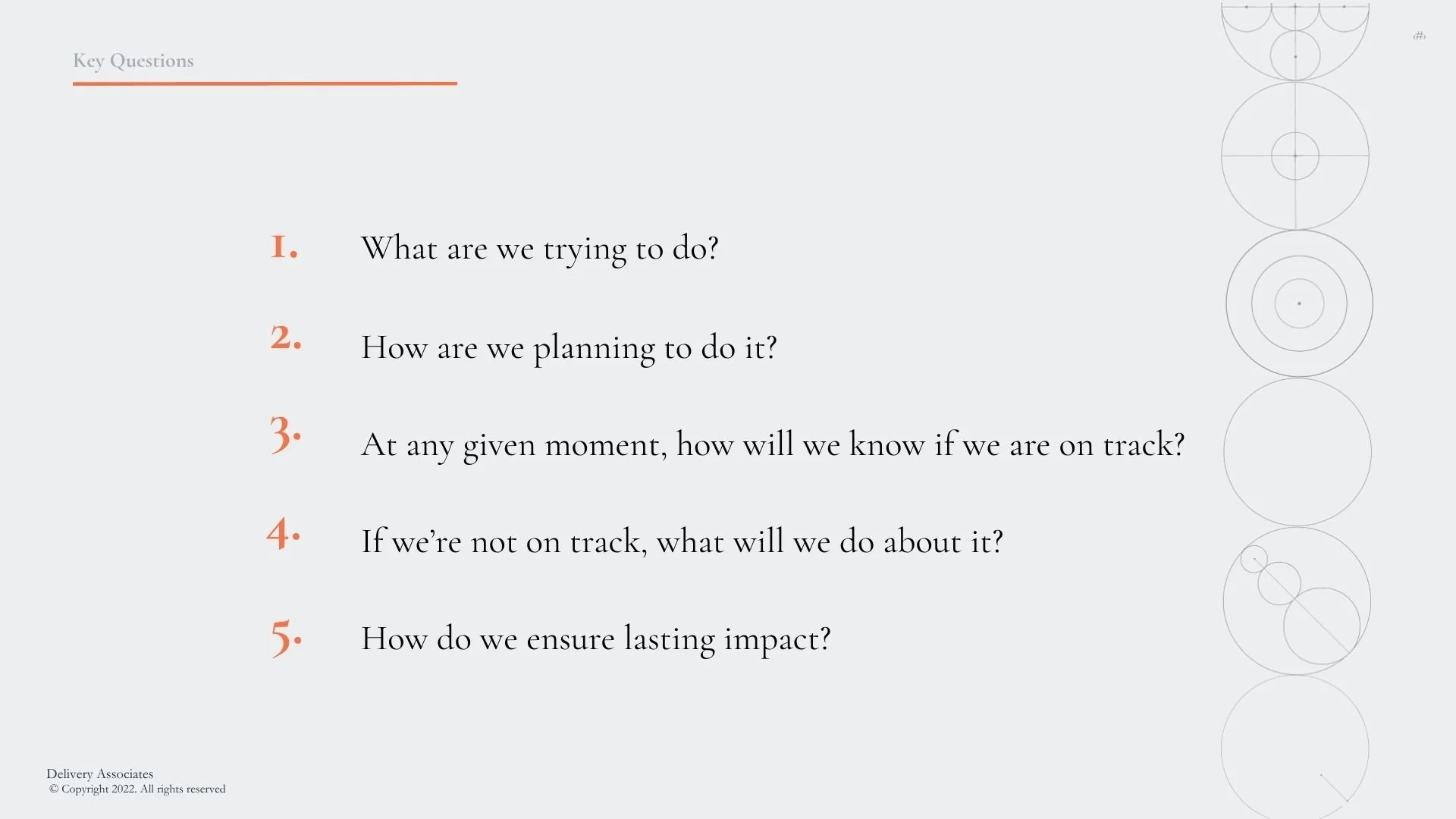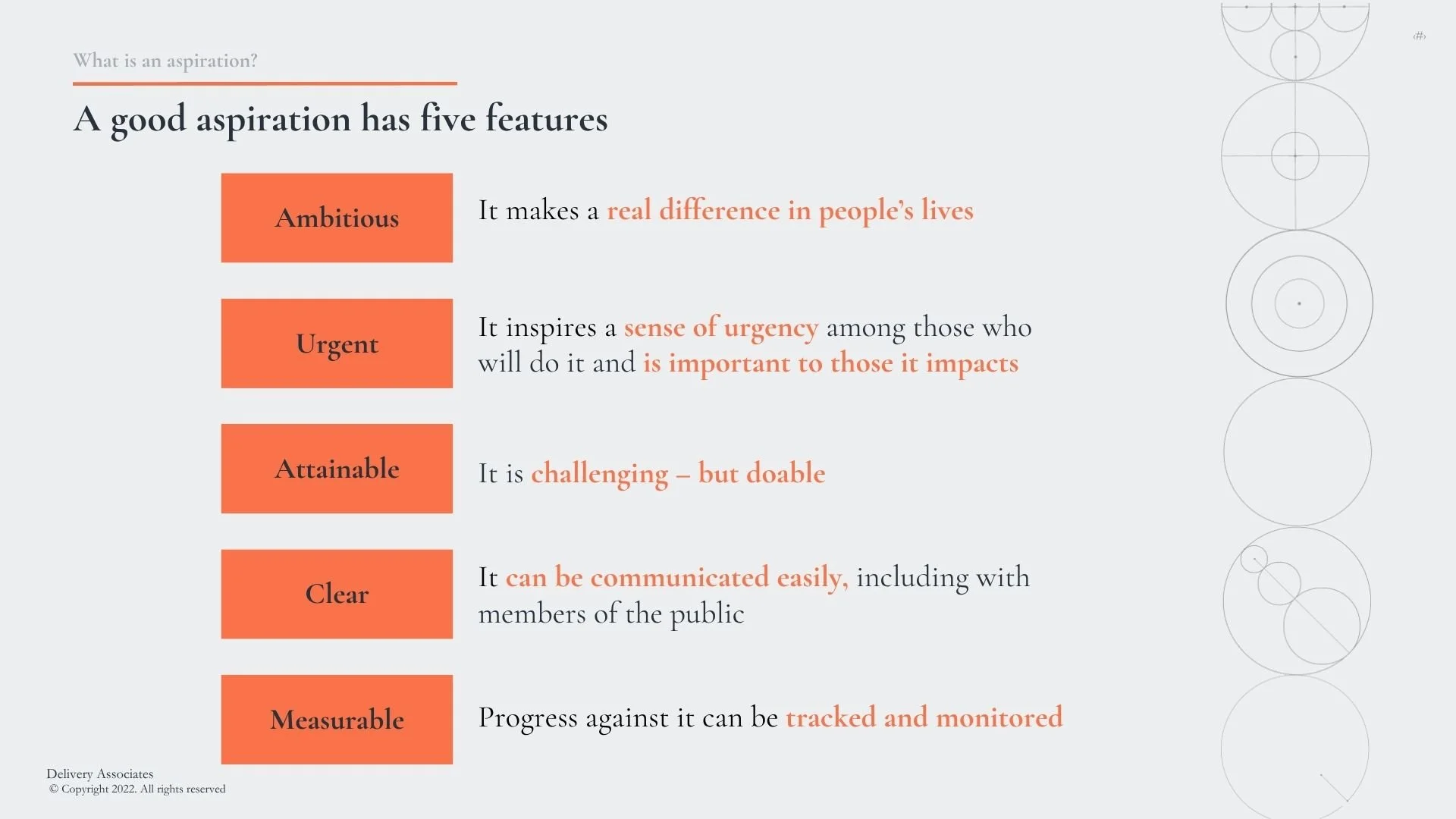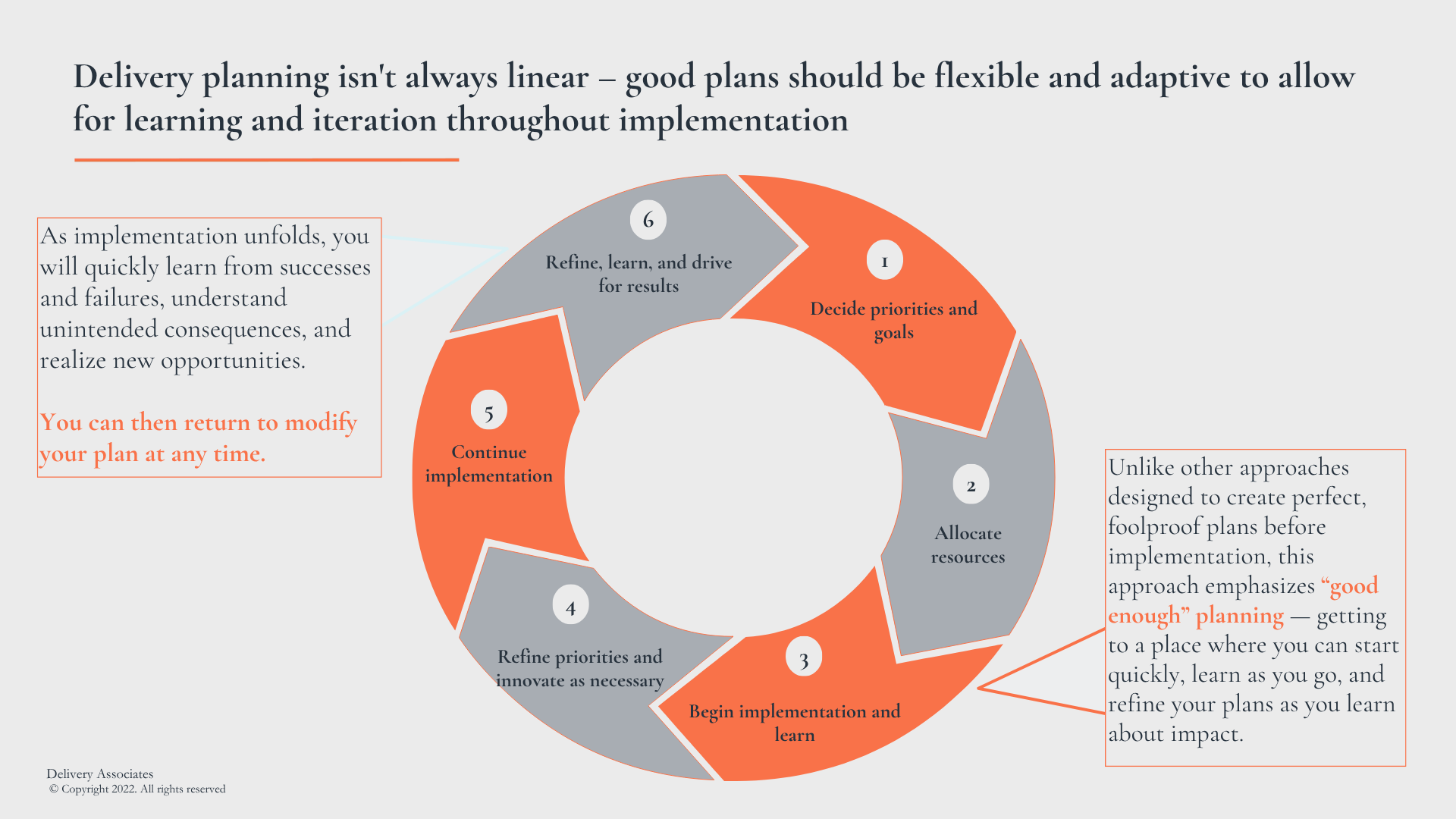The Capacity to Deliver: How to Run Results-Driven Philanthropy
“The presence or absence of the capacity to deliver will make the difference between a once-in-a-generation opportunity seized and a once-in-a-generation opportunity missed.”
This piece is written by Delivery Associates.
Foreword by Kumar Garg
In philanthropy, we often focus on what we fund – the ideas, the innovators, the institutions driving change. But what determines whether those ideas truly make a difference is not only what we fund, but how they are delivered and when they are not.
This focus on delivery – on the capacity to deliver – is an underrated idea.
Delivery is often the missing link between vision and impact. Across both the public and philanthropic sectors, we’ve seen how even the most promising initiatives can falter without clear accountability, data-driven routines, and the capacity to execute. Yet when delivery works – when goals are clear, progress is measured, and obstacles are surfaced and solved in real time – good ideas become great outcomes.
Thankfully, things are changing, and the focus on delivery and state capacity are becoming resonant ideas – from the widespread acclaim that Jennifer Pahlka’s wonderful writings have gotten, to Santi Ruiz’s excellent Statecraft podcast.
But one of the questions I get often is how donors should put this idea into practice – in what they fund, and how they fund.
That’s why I’m excited about the release of this playbook, which was developed by our close collaborators at Delivery Associates, early leaders in the science and practice of delivery, led by our Senior Advisor Laurel Blatchford.
Laurel and her team have spent years helping governments, foundations, and civic organizations bridge the gap between aspiration and action. Their work is grounded in the belief that implementation itself can be a discipline that is systematic, measurable, and teachable.
At Renaissance Philanthropy, we want all of our Fund Leaders, whether in the Public Benefit Innovation Fund or our AI and Education work, to be thinking about delivery – both as a place to look for opportunities for impact (where failure to invest in delivery is the bottleneck), and as a blind spot to avoid in achieving their own fund goals.
What follows is a field guide that we plan to use internally and share with others. It translates lessons from the Delivery Associates team’s work with the philanthropic and public sectors into actionable strategies for philanthropists, showing how funders and builders alike can strengthen delivery capacity, build durable systems for impact, and ensure that good ideas don’t just launch, but last.
I encourage you to read it, and add to it with your own hard-earned experiences.
— Kumar Garg
President, Renaissance Philanthropy
The Challenge
One of the key questions faced by both philanthropists and public sector leaders is how to ensure that the programs, innovations, and solutions that they invest funding and political capital in deliver results. In this playbook, we share how the lessons of effective delivery and implementation in the public sector can be applied by philanthropists, and the unique role that philanthropists’ investments and support can play in making those results replicable, scalable, and sustainable.
Philanthropic investments that intersect with the public sector can be especially challenging due to changing leadership, shifting priorities, and funding instability, all of which can impact governments’ capacity and commitment to implementation. The good news is that the social impact field has developed ways to manage and minimize these risks in order to successfully deliver results via a concept called delivery: turning good ideas into effective, results-driven actions which creates lasting positive outcomes.
At the core of the framework is asking and answering these five key questions, continuously and rigorously:
The Play
Even the most well-designed initiatives will fail without effective execution. Delivery helps bridge the gap between intention and outcome, ensuring that social impact investments made by governments, philanthropies, and NGOs lead to lasting and measurable improvements in people's lives.
Asking the five questions provides a clear roadmap for action, accountability, and sustainability for actors from any sector seeking to increase economic mobility and enhance people’s well-being.
What are we trying to do?
The first step toward setting up a successful delivery effort is getting really clear about what should be achieved through a particular investment. For philanthropists, this process is both internal and external: within philanthropy, it is important to be clear about goals in order to strategically target investments. When working with grantees and partners, this means challenging them to clearly answer this question to support effective program design.
In both contexts, successfully answering this first question – what are we trying to do? – involves four key steps:
Start with the problem: Use data and community input to understand what needs to change and why it matters.
Set a bold and clear vision: Articulate an aspiration or vision statement, which can be used to inspire action and keep the focus on real outcomes.
Define measures of success: Translate the aspiration into specific indicators that are measurable, moveable, and meaningful – then use these to track progress over time.
Identify leadership: Finally, identify the leader responsible for achieving the aspiration and plan to mobilize other key stakeholders who will be critical to the effort.
How it works in practice: In Birmingham, Alabama, community engagement was integral to the process of understanding the city’s prime-age employment gap – the rate of unemployed workers ages 25-54 – and identifying possible solutions. A multitude of partner organizations spanning city government, the local K12 school district, community colleges, child care, transportation, community-based organizations, and the business community contributed to this process.
The result was a comprehensive workforce development plan that included pathways and pipelines to living wage jobs in advanced manufacturing and construction as well as a set of clear goals, stating that by 2029:
4,000 K12 students will participate in new or expanded career-connected programs,
2,500 residents will complete career training,
1,500 residents who have completed career training will be hired, and
80 percent of residents hired through the career training program will remain at their job after 1 year.
To help make these goals a reality, local partners worked with Delivery Associates to write a successful $20 million Economic Development Administration Distressed Area Recompete Pilot Program proposal and build capacity within the coalition to effectively implement their awarded grant. The project includes the creation of an overarching workforce strategy and workforce programming landscape analysis, the development of a monitoring and evaluation system, and providing support to formalize the coalition's governance structure.
How are we planning to do it?
The second step in successful delivery is creating a clear, action-focused plan for achieving the aspiration. Investing in a planning phase that goes beyond the traditional strategic planning process and builds a collaborative understanding of how the plan will be realized can set up both philanthropies and grantees to implement successful programs that deliver results.
There is a balance to strike in the level of planning detail. We suggest a plan that is just detailed enough to drive day-to-day implementation but is not overly detailed to the point it becomes unusable and sits on a shelf.
Some essential things to keep in mind:
Start with an evidence-based strategy: Draw on research and best practices to identify key interventions and test the theory of change to ensure those interventions will have an impact on the articulated aspiration.
Create a good-enough plan – then start implementing: For each of the key interventions, create a shared, written plan that describes success, scale, resources needed, and major milestones.
Set up systems for monitoring progress: Identify essential indicators for monitoring implementation progress and set up systems to regularly collect and analyze data on those indicators.
Plan for stakeholder engagement: Identify the critical stakeholders necessary to successfully implement the plan – and then develop a strategy to engage them.
How it works in practice: In New South Wales, Australia, the state government set up the Premier’s Implementation Unit (PIU) in 2015 to deliver on 12 key priority goals, each with a specific and measurable target – such as creating 150,000 new jobs by 2019. The PIU was charged with supporting responsible agencies to measure and monitor performance, make progress toward the Premier’s goals, and report progress to the Premier, key ministers, and the public.
The PIU set up structures for real-time data collection to allow for transparent and regular reporting of progress and worked closely with communities and practitioners to continue to iterate and improve implementation strategies. In the end the PIU was successful in achieving several of their goals, including shortening emergency room wait times and reducing litter, and made significant progress across the board.
At any given moment, how will we know if we are on track? … And if we are not on track, what will we do about it?
Once there is a clear plan in place, the next step is to implement. Once implementation begins, be sure to put the systems and processes in place to regularly monitor progress, surface challenges, and learn.
For philanthropists, this may mean setting internal routines to monitor progress on established goals. It might also mean setting up regular reporting and learning routines with grantees, finding the right balance between being involved enough to encourage effective delivery without being prescriptive or too entangled in grantees’ day-to-day decision-making. In both cases:
Build regular routines to drive action: Don’t just meet to report. Use structured check-ins to review data, track progress, surface challenges early, and ensure everyone is accountable for moving the work forward.
Tackle problems when they come up: Prioritize and act on the most urgent challenges. Investigate and identify solutions and then incorporate them into the plan.
Create opportunities for learning: Routines aren’t just for identifying problems. They’re also a chance to pinpoint and share what’s working and help everyone get better over time.
How it works in practice: After Category 5 hurricane Maria hit Puerto Rico in 2017 and devastated the island’s education infrastructure, DA partnered with the Puerto Rico Education Initiative (PREI) to improve academic outcomes on the island. The project was focused on improving 3rd and 5th grade students’ achievement in Spanish language and math, respectively.
To track progress, DA and PREI developed online assessment tools to provide teachers with weekly data on student participation and learning. This real-time data made it possible for teachers to develop routines for analyzing results and then adjust instruction quickly and target additional academic support where needed.
DA also supported implementation of teacher training, curriculum adoption, and later, during the pandemic, the transition to online and hybrid learning using Delivery principles. Schools in the program improved in both 3rd grade Spanish and 5th grade math at a higher rate as compared to schools in the same districts that did not participate. In the final year of the partnership, the program was formally transferred to PREI and the Puerto Rico Department of Education to run independently and build to scale across the island.
How do we ensure lasting impact?
Successfully implementing a program or service in a specific place is just a starting point for enduring social impact. Just as shifting political orientations and funding in the public sector can be a challenge for sustainability, if philanthropists change their priorities too frequently, it can make it difficult for grantees to demonstrate the results of their investment. Implementation isn’t complete until learnings from the process have been documented and used to drive lasting impact by sustaining, replicating, or scaling the outcomes.
This process should start with a rigorous, data-driven evaluation to assess impact, followed by developing a plan to replicate the results in additional geographies, scale the program to impact more beneficiaries in the existing context, and/or build lasting impact in the current context.
Keep these lessons in mind to support the sustainability of outcomes:
Plan for long-term impact from the beginning: Think early about what it will take to maintain program outcomes, and build that into goals, plans, and routines.
Make the program easy to grow or share: Use program evaluation to identify what parts are essential, simplify the design, and document what works so others can learn and use it too.
Help others take it forward: Work with grantees and partners to create a clear exit plan, grow local leadership, and make sure funding and policy systems are in place to keep things running.
How it works in practice: With the support of a philanthropic partner, DA worked with the Ministry of Health in Rwanda to strengthen the ministry’s capacity and leadership capabilities, empowering them to accelerate progress on national health priorities well beyond the engagement’s timeline.
Using strategies like retreats, coaching, and hands-on collaboration, DA worked with the Ministry of Health to determine barriers to progress and identify their root causes; build strong routines and strengthen the culture of delivery; and support implementation planning for high-impact priorities. This laid the foundation for the ministry’s ongoing efforts to grow a community of health leaders committed to results.
How We Can Help
The delivery framework has already proven helpful in the philanthropic sector, where the focus on outcomes and impact has led to systemic change. The section below explores additional unique contributions that philanthropy can make in the ecosystem of public sector delivery, including through expanding delivery capacity and creating structures for lasting data-driven change, seeding innovation and making initial investments to leverage additional or ongoing funding, and taking a holistic approach to solving complex social challenges.
Strategies for philanthropy that deliver results
Strategy #1: Embed local delivery support, adding capacity to government teams to provide delivery support and in turn make lasting improvements to public programs, services, and investments. For example:
A philanthropic organization supported two local governments to establish Delivery Units (DUs) — dedicated teams designed to accelerate progress on priority policy initiatives and build long-term capacity within government. In the initial pilot, both governments prioritized strengthening and scaling alternative mental health crisis response programs that dispatch licensed clinicians to respond to non-violent, mental health-related 911 calls.
Delivery Associates (DA) partnered with each city to hire, train, and coach DU staff; develop clear goals and metrics for success; and enhance data systems to inform service delivery improvements. Over the course of the two-year pilots, one government doubled the size of their frontline staff teams, enabling them to meet 30 percent more of the total demand for the service; and the other government more than tripled access to the program’s service, while increasing responses to service requests in high-poverty neighborhoods by over 75 percent.
US Digital Response (USDR) leverages philanthropic support to partner directly with governments to improve delivery of critical services, often at no cost to recipients. USDR deploys skilled volunteers with technological expertise to work with state, local, and federal governments to solve a variety of challenges, including: creating protocols for secure and streamlined election administration, improving service and benefits delivery through responsible use of AI, and using data to understand what residents want and need from government services.
The Coding it Forward program also provides technological expertise to government but does so through a fellowship that places early-career technologists into public sector roles, where they work side by side with public servants to modernize services and introduce innovative tools. Since 2017, Coding it Forward has placed 691 fellows across 80 local, state, and federal offices nationwide. Initially focused on federal agencies, the program expanded in 2021 to support state and local governments after an overwhelming response.
Philanthropic support helped make the Judicial Innovation Fellowship (JIF) possible, allowing technologists to embed directly within state, local, territorial, and tribal courts to work alongside judges and court administrators to automate, increase efficiency, and improve user experience. Founded by Renaissance Philanthropy Fellow Jason Tashea, JIF was created to address a deep structural challenge: while courts are a cornerstone of democracy, they are often constrained by outdated systems, limited technical expertise, and complex, manual processes. The inaugural JIF fellows worked on projects to streamline and improve services by enhancing data interoperability, creating user-friendly e-file portals, and developing open source court software that can be adopted by other jurisdictions.
Strategy #2: Support program delivery by setting up planning and monitoring systems to ensure grantees are focused on delivery and outcomes. For example:
The Harold K.L. Castle Foundation, a private foundation in Hawai‘i that focuses on public education, marine conservation, and strengthening the communities of Windward O’ahu, developed tools for measuring its own success consistently across diverse programs and communicating results clearly to stakeholders. The team created practical tools to track grants, communicate program updates, and assess strategic progress to ensure investments were contributing to their intended outcomes.
With collaboration from stakeholders across the organization, the process resulted in a new, consistent, and transparent system for tracking strategy-level impact. Creating streamlined templates for reporting to the board and a revised board calendar aligned with impact measurement milestones – as well as training program officers in using the new system – helped to fully integrate them into the foundation’s day-to-day work. As a result, the foundation now has a durable framework for planning, measuring, and communicating the outcomes of its investments. Though much of this work is internal, the foundation produces an annual impact report that draws from these delivery assessments.
Strategy #3: Drive innovation and replication by providing program and technical assistance to test innovative solutions to shared challenges in health, environment, education, and civil service delivery, and identify opportunities to scale. For example:
The Talent Mobility Fund, an initiative of Renaissance Philanthropy, is using an innovation and replication strategy to attract and retain talented science, technology, engineering, and mathematics (STEM) professionals. Immigration policies for these professionals are operating inefficiently: although pathways like the O‑1 “extraordinary ability” visa and J‑1 Research visa exist, they are underused, leaving thousands of scientists and engineers who are interested in coming to the U.S. unable to come and contribute their expertise. The initiative is testing a range of strategies for removing barriers for global STEM talent to come to the U.S., including technological tools to help people navigate the visa process and launching regional talent hubs that link people with opportunities in rural and emerging tech hubs. The intention is to pilot a number of possible solutions and replicate and scale ideas that are successful. Early results show a powerful return on investment: for every $5,000 TMF invested, at least one additional STEM professional is able to stay and work in the U.S., generating millions in long-term economic and social value.
Philanthropy can play a role in convening public sector leaders to access deep expertise about a specific policy topic, particularly those of a technical nature. The Center for Civic Futures is doing just that for AI, a rapidly changing policy area that many state leaders do not have the capacity to stay up to date with. The initiative brought together leaders from 27 states, the District of Columbia, and the Cherokee Nation to increase their knowledge of the AI ecosystem and discuss how best to incorporate AI thoughtfully and ethically into public service systems. As a result of the convening, state government leaders came away with actionable frameworks for evaluating AI, clearer insight into its strengths and limitations, practical strategies for reducing digital “clutter” in legacy systems, and effective approaches for engaging staff in AI adoption.
Philanthropy can encourage a diverse range of stakeholders and problem-solvers to develop solutions through prize competitions. The Tools Competition is an opportunity for EdTech innovation that leverages digital technology, big data, and learning science to meet the urgent needs of learners worldwide. Competition submissions are evaluated across many factors, such as overall proposal quality, scalability, and ability to contribute to learning science research. Winners receive funding to develop their ideas, access to a peer learning network, and advising and feedback on their product. Since its first cycle, the Tools Competition has named over 150 winners from 48 countries, with winning organizations now reaching nearly 50 million learners and educators from early childhood through adulthood.
Strategy #4: Catalyze investment at the community level by providing tailored technical assistance to help governments access federal funding while supporting local community organizations to build partnerships and alliances that enhance project delivery. For example:
The Community Funding Accelerator (CFA) is an example of how philanthropic funding can yield a high return on investment, both in terms of dollars and in the form of community benefits. Through the CFA initiative, Delivery Associates works closely with communities to help them access public funding, typically in the form of federal competitive grants in the education and workforce spaces. CFA provides communities with direct technical assistance in convening organizations, building coalitions, and writing grant proposals. To date the initiative has supported 46 grant applications that have yielded $280 million in awards as well as an additional $137 million in leveraged funds, such as in-kind commitments from private sector partners. The initiative is expected to reach over 260,000 students, create more than 11,000 jobs, and establish 20 career pathways programs.
Strategy #5: Provide global strategic and system support by helping multiple donors set up a framework to identify impactful projects for global initiatives – including a rigorous system of impact measurement and continuous improvement – and capturing and communicating how the initiative is changing lives through storytelling. For example:
By pooling grant funding from philanthropic donors and lending capital from the Islamic Development Bank (IsDB) into a multi-donor trust fund, the Lives and Livelihoods Fund (LLF) widens access to capital for important development projects by offering grants and low-cost loans. In turn, the fund’s blended capital structure creates a 5x multiplier effect for each dollar donated. LLF currently has 37 active projects to improve health outcomes, increase agricultural production, and address the lack of basic infrastructure in the least wealthy IsDB member countries. The impact of each project is transparently reported on the LLF website, along with storytelling about the communities served.
Conclusion
Even the best-designed initiatives won't succeed without strong execution. While setting goals and planning are important, real social change happens only when efforts are put into action and result in meaningful change for communities. Funders can maximize the impact of their investments by focusing on their unique value-add in creating effective delivery systems for public services and social change, leading to lasting, measurable benefits for people's lives.




